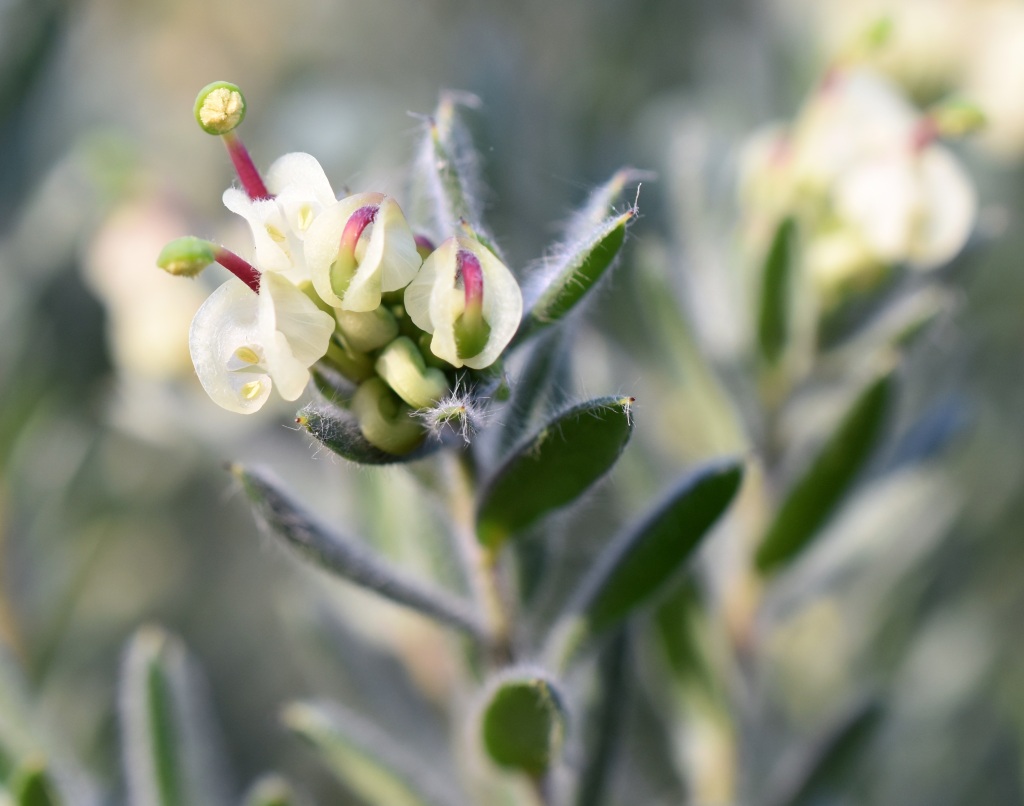Grevillea jephcottii
J.H.Willis Pine Mountain GrevilleaLow dense to tall spindly shrub 1–3 m high. Leaves entire, usually narrowly oblong to narrowly elliptic, usually 10–35 mm long, 1.5–6(–8) mm wide; lower surface glabrous (sparsely hairy along midvein on juvenile leaves); margin shortly recurved. Conflorescences terminal, erect, scarcely exceeding foliage, simple, 3–8-flowered; rachis 2–3 mm long, with scattered hairs; perianth pale lemon or greenish, blackening with age, ventrally pouched near base, glabrous outside, bearded inside; pistil 9–10.5 mm long, ovary sessile, densely villous, style purplish with white hairs, ventrally glabrescent, dorsally villous in the lower half, pollen presenter mid green, contrasting with the style, very oblique to almost lateral. Fruits pilose. Flowers late winter to summer.
VRiv, GipP, NIS, HNF, VAlp. Victorian endemic. Restricted to a small area in the north-east between Walwa and Corryong, centering on Burrowa-Pine Mountain National Park. Occurs in rocky situations in dry sclerophyll forest, on granite, at altitudes of c. 550–650 m.
Grevillea jephcottii is similar to G. lanigera, the latter which has a hairy leaf lower surface and longer pistil. Reportedly hybridising in the wild with G. lanigera.
Makinson, R.O. (1996). Grevillea. In: Walsh, N.G.; Entwisle, T.J., Flora of Victoria Vol. 3, Dicotyledons Winteraceae to Myrtaceae, pp. 845–870. Inkata Press, Melbourne.
 Spinning
SpinningSynonyms
Olde, P.; Marriott, N. (1995). The Grevillea Book. Kangaroo Press, Kenhurst, NSW, Australia.


